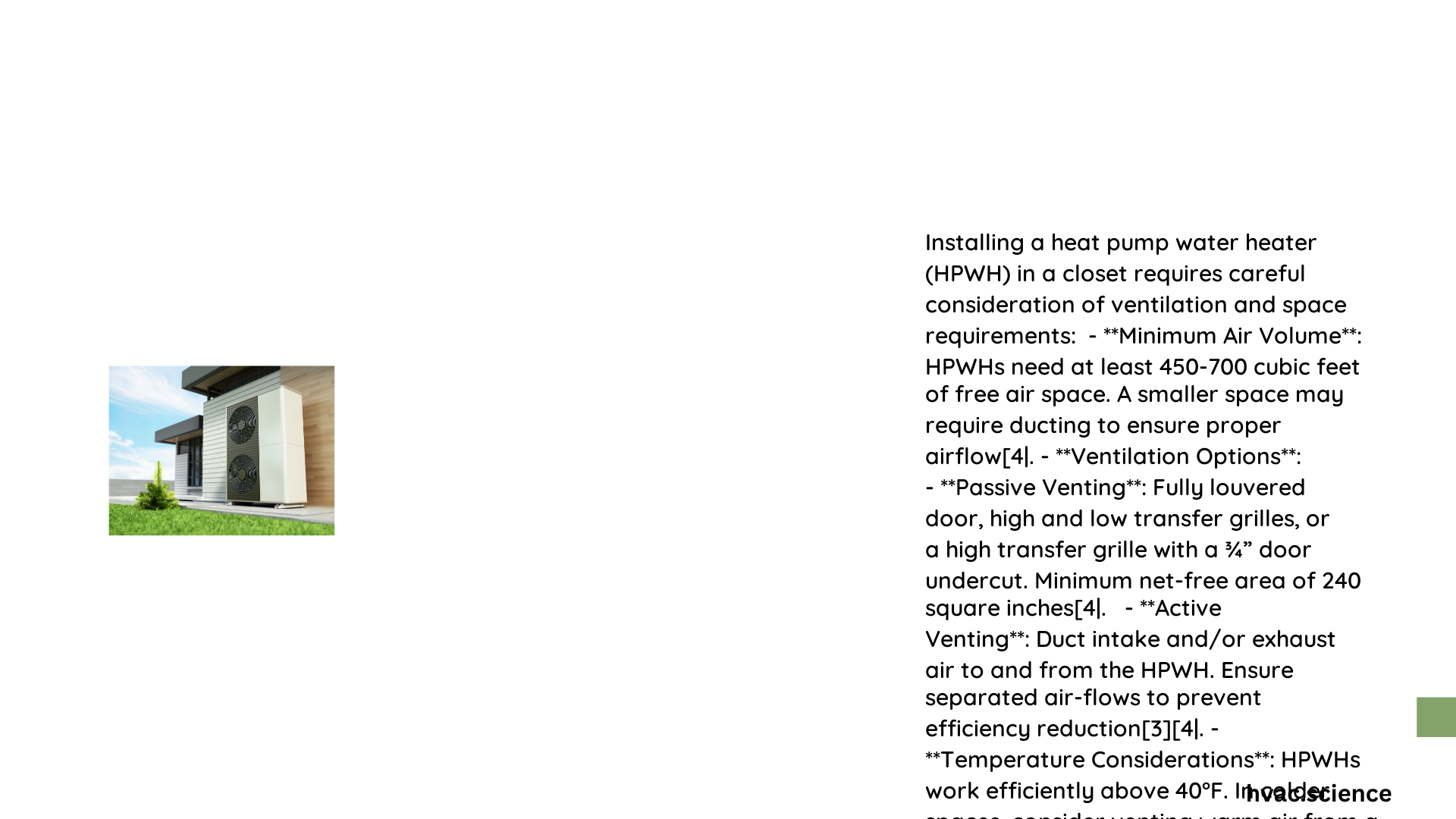Heat pump water heaters offer an energy-efficient solution for residential hot water needs, but installing them in a closet requires careful planning. Homeowners must consider specific spatial, ventilation, and electrical requirements to ensure optimal performance and compliance with manufacturer guidelines. This comprehensive guide will walk you through the critical considerations for successfully integrating a heat pump water heater into a closet space.
What Are the Essential Space Requirements?
Heat pump water heaters demand specific spatial conditions to function efficiently. Unlike traditional water heaters, they require substantial air volume and precise clearances.
Minimum Cubic Footage Considerations
| Space Requirement | Minimum Specification |
|---|---|
| Air Volume | 450-700 cubic feet |
| Floor Space | 3×3 feet minimum |
| Ceiling Height | 7 feet recommended |
Critical Clearance Specifications
Manufacturers typically recommend:
– Side clearances: 0-7 inches
– Top clearances: 9-16 inches
– Ensure control panel faces outward
– Maintain accessibility to data connection ports
How Do Ventilation Needs Impact Closet Installation?

Proper ventilation is crucial for heat pump water heater performance. The system requires consistent airflow to extract heat efficiently.
Ventilation Configuration Options
- Fully Louvered Door
- Provides minimum 240 square inches of net-free area
-
Allows unrestricted air circulation
-
Transfer Grille System
- High and low grille placement
-
Enables temperature-neutral air exchange
-
Ducting Solutions
- Route cooler exhaust air to appropriate spaces
- Prevent temperature stratification
What Electrical Considerations Exist?
Electrical requirements for heat pump water heaters are specific and non-negotiable.
Electrical Specifications Checklist
- Power Supply: 240 Volt, 30 Amp dedicated circuit
- Wire Gauge: Match manufacturer recommendations
- Grounding: Proper electrical grounding essential
- Circuit Protection: Dedicated breaker required
What Maintenance Practices Ensure Longevity?
Regular maintenance prevents efficiency degradation and extends system lifespan.
Maintenance Routine
- Monthly Tasks:
- Inspect air filters
- Check condensate drainage
-
Verify ventilation paths
-
Quarterly Checks:
- Examine electrical connections
- Test temperature and pressure relief valve
- Verify seismic strapping integrity
What Potential Challenges Might Arise?
Understanding potential installation challenges helps preempt performance issues.
Common Installation Obstacles
- Insufficient air volume
- Improper ventilation
- Electrical code non-compliance
- Inadequate clearances
- Poor condensate management
Conclusion
Installing a heat pump water heater in a closet requires meticulous planning and adherence to manufacturer specifications. By understanding space, ventilation, electrical, and maintenance requirements, homeowners can successfully integrate this energy-efficient technology.
